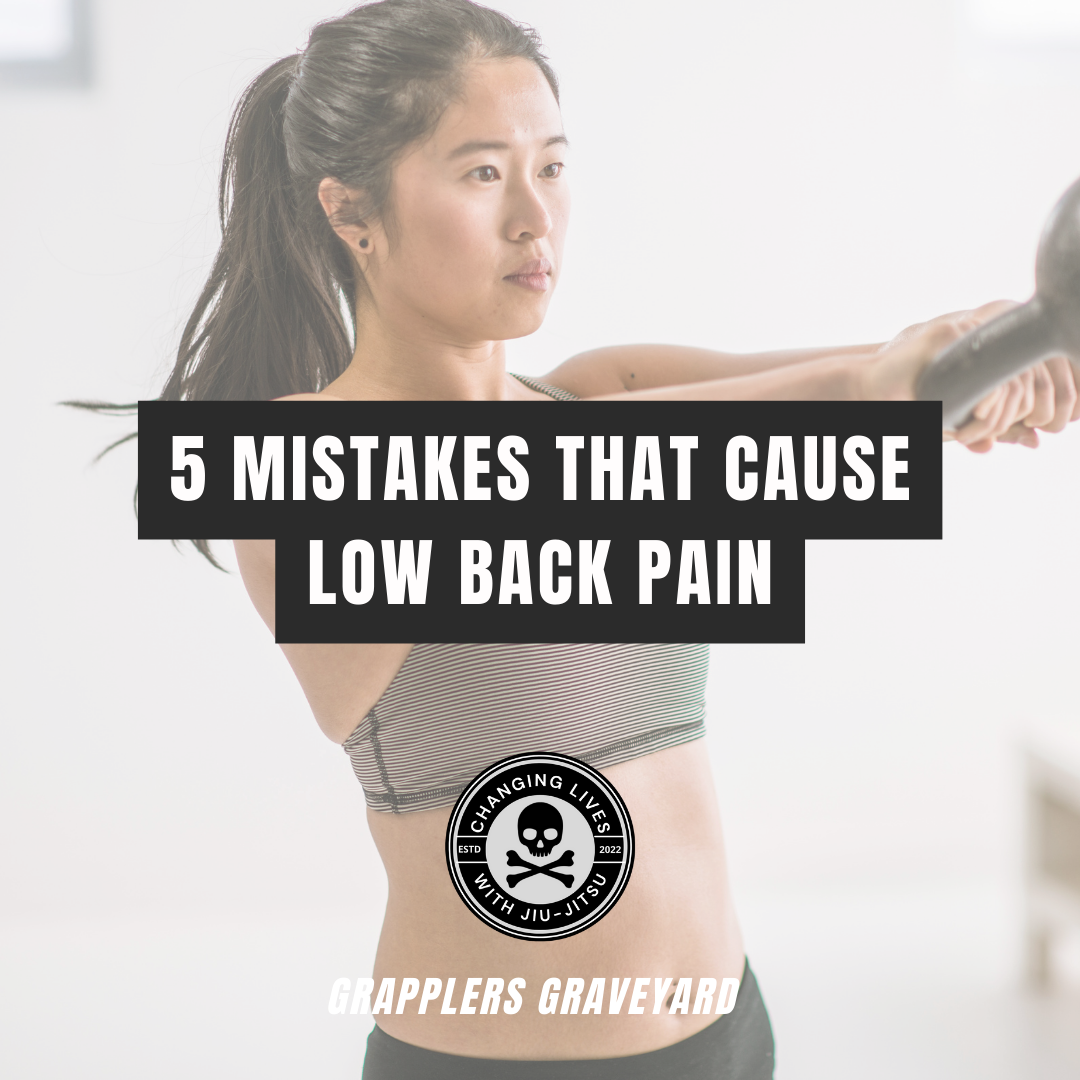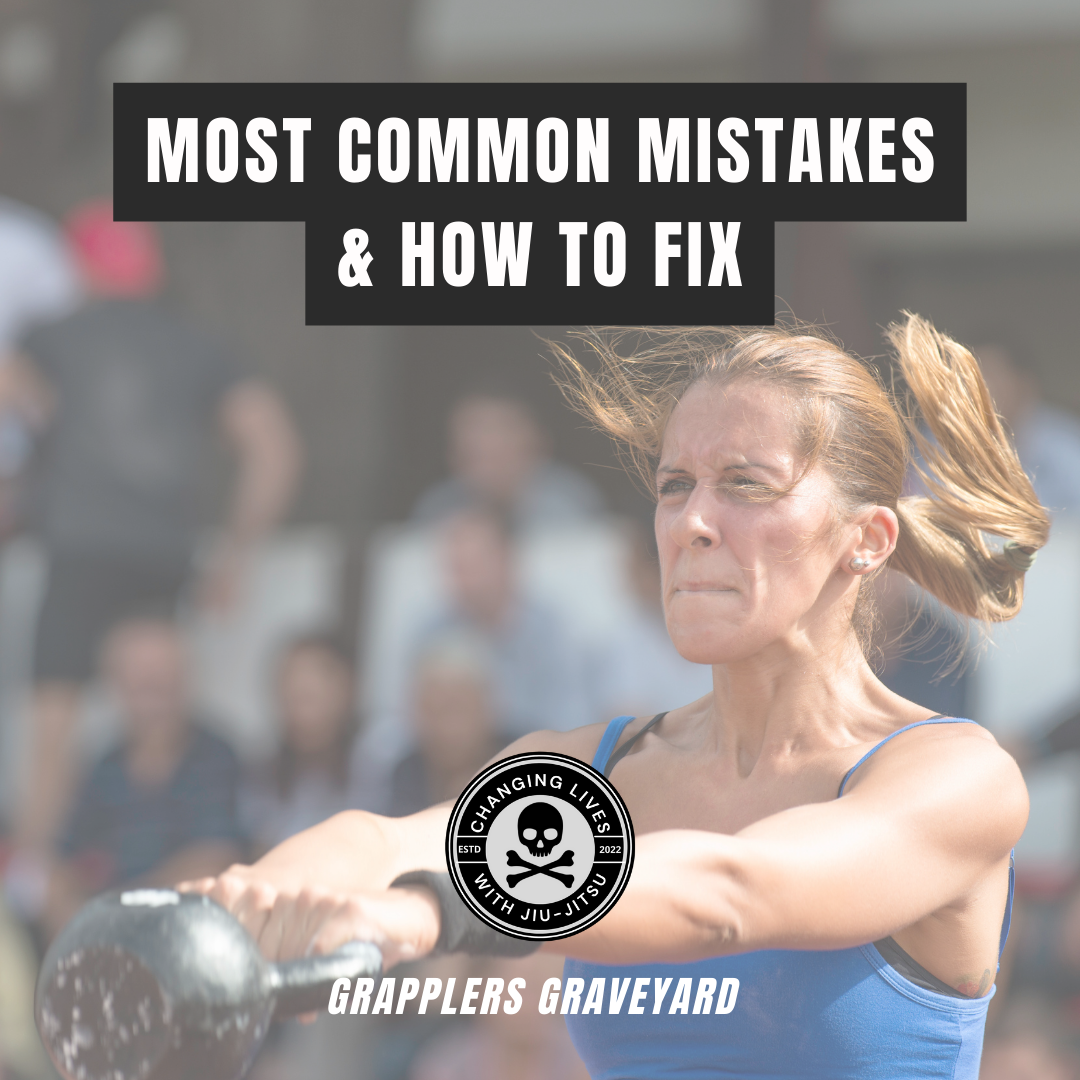Table of Contents

Arguably the most notable exercise in kettlebell training, the kettlebell swing, is one of the best full-body exercises you can perform.
However, there are many common mistakes beginners make when performing kettlebell swings that can hinder you from making progress by resulting in an injury.
Avoiding these mistakes and ensuring proper technique is key to ensuring longevity in not just your kettlebell training but also your fitness journey!

What is the Kettlebell Swing?
One of the best and most versatile exercises in kettlebell workouts is none other than the kettlebell swing.
The reason for the popularity of this movement is that it targets almost the entire body like a compound movement from your shoulders to your lower back and even to your whole lower body.
The swing consists of two main movements, the hinge, and the thrust. The first step is to stand upright holding the kettlebell with its handle, keeping your feet around shoulder width apart.
Next is to bend in a hinged manner to let the weight freely glide backward between your legs, at this point, you should feel a good stretch in your hamstrings and glutes.
This stretch is essentially the green light for you to thrust the kettlebell in front of you, pushing with your glutes. You should note that at this point your arms should be loose allowing the weight to move freely in front of you after which you return to the original starting position.
Who Should Not Perform Kettlebell Swings
Kettlebell swings are one of the most versatile exercises that not only build musculoskeletal and cardiovascular health, but also help you with mobility and flexibility issues. Moreover the kettlebell swing is great for people with past injuries starting fitness rehab.
However, there are still some cases where one should avoid kettlebell swings, such as bad back muscles or weak shoulders, mainly weak rotator cuffs.
If you have problems that hinder you from using the proper technique it is recommended you visit a physical therapist/physiotherapist. Get a professional opinion from a specialist before jumping into this exercise.
Kettlebell training involves dynamic, whole-body movements that enhance strength, flexibility, and cardiovascular fitness. Its effectiveness for athlete-like conditioning stems from the combination of resistance training and functional movements. You need good equipment to get the most out of this style of training, that's why we choose Kettlebell Kings.

5 Mistakes That Cause Lower Back Pain After Kettlebell Swings
Not Being in Control of Your Pelvic Tilt (Doing Squats instead of Hip Hinging)
When performing kettlebell swings, having proper control of your pelvic tilt is crucial to prevent back pain.
If you’re unable to maintain a stable and neutral pelvic position throughout the movement, it can put excessive strain on your lower back. This can lead to discomfort and potential injury.
It’s important to focus on engaging your core and maintaining proper form to avoid any unnecessary stress on your back during kettlebell swings.
Too Much Back Extension
If you have excessive back extension during kettlebell swings, it can contribute to back pain. It’s important to avoid overextending your spine and instead focus on maintaining a neutral spine position throughout the movement.
Too much back extension can strain the muscles and structures in your back, leading to discomfort and potential injury. Remember to engage your core and use proper form to protect your back during kettlebell swings.
Tight Hamstrings
If your hamstrings are tight, it can contribute to back pain after kettlebell swings. Tight hamstrings can affect your hip mobility and limit your ability to hinge at the hips properly during exercise.
This can result in excessive strain on your lower back as it compensates for the lack of mobility in the hamstrings.
It’s important to prioritize hamstring flexibility through stretching and mobility exercises to prevent back pain and ensure proper form during kettlebell swings. Adding in a proper warm-up routine can also help you prevent any additional stress.
Using too much Arms
If you rely too much on your arms during kettlebell swings, it can lead to back pain. Using excessive arm strength instead of engaging your core and hip muscles can put unnecessary strain on your back.
It’s important to focus on generating power from your hips and using your arms as a guide rather than the primary force.
This will help distribute the workload properly and prevent back pain during kettlebell swings.
Doing too Much of a Squat
If you squat too deeply during kettlebell swings, it can contribute to back pain. Going too low in the squat position can cause your lower back to round and put excessive strain on the spine.
It’s important to maintain a proper hip hinge and avoid squatting too deeply to protect your back during kettlebell swings. Focus on hinging at the hips and maintaining a neutral spine to prevent any discomfort or potential injury.

Common Mistakes of Kettlebell Swings
Looking Up in The Beginning of the Swing
Looking up at the beginning of a kettlebell swing is a common mistake that can have consequences. It can lead to improper form and potentially strain your neck and upper back.
It’s important to keep your gaze forward and maintain a neutral head position throughout the movement. This allows for proper alignment and helps prevent any unnecessary strain or discomfort in your neck and upper back.
Focus on keeping your head in line with your spine to ensure a safe and effective kettlebell swing. A good cue is to move your head along with the movement of the kettlebell swing.
Swingin too High
Swinging too high in a kettlebell swing is a common mistake that can have consequences. When you swing the kettlebell too high, it can put excessive stress on your shoulders and lower back.
This can lead to strain, discomfort, and potential injury. It’s important to focus on the proper range of motion, swinging the kettlebell to chest height, and avoiding overextension.
By maintaining control and staying within the appropriate range, you can prevent any unnecessary strain and keep your kettlebell swings safe and effective.
Heel Lifting or Toe Lifting
Lifting your heels or toes during kettlebell swings is a common mistake that can have consequences. When your heels or toes come off the ground, it disrupts your stability and shifts the focus away from your hips and core.
This can put additional strain on your lower back and increase the risk of injury. It’s important to keep your feet grounded throughout the movement, maintaining a solid base and proper alignment.
By focusing on keeping your feet flat on the ground, you can ensure better stability and prevent any unnecessary strain on your back during kettlebell swings.
How to Recover from a Kettlebell Back Injury
To recover from a kettlebell back injury, it’s important to prioritize rest, gentle movement, and gradual strengthening. Implementing these will sure you do not increase the severity of your injury but rather slowly recover and get back into your training as soon as possible.
Prioritizing Recovery
First, allow your back to rest and heal by avoiding any activities that exacerbate the pain. If it is just soreness, it is recommended to rest at least 48 hours in between training sessions as this is the minimum time your muscle tissues require to fully recover.
Incorporating General athleticism with gentle movements
Second, incorporate gentle movements and stretches that promote flexibility and mobility in the back, such as cat-cow stretches and gentle twists.
Gradual Strengthening using resistance
Finally, gradually strengthen your back muscles through exercises like bird dogs, glute bridges, and modified deadlifts, focusing on maintaining proper form and avoiding any pain.
Remember to consult with a healthcare professional for personalized advice and guidance throughout your recovery process.
Kettlebell training involves dynamic, whole-body movements that enhance strength, flexibility, and cardiovascular fitness. Its effectiveness for athlete-like conditioning stems from the combination of resistance training and functional movements. You need good equipment to get the most out of this style of training, that's why we choose Kettlebell Kings.
Frequently Asked Questions
Where should you feel kettlebell swings while performing the exercise?
When performing kettlebell swings, you should primarily feel the movement in your hips and glutes. The hip hinge motion generated by the swing should engage your posterior chain, including your hamstrings and lower back.
As you swing the kettlebell forward, focus on squeezing your glutes and driving your hips forward to generate power.
You may also feel some activation in your core muscles as they work to stabilize your body during the movement. It’s important to maintain a neutral spine and avoid overusing your lower back or shoulders.
By focusing on the proper technique and engaging the right muscles, you can maximize the benefits of kettlebell swings and avoid unnecessary strain or discomfort.
Where should I feel sore after kettlebell swings?
After performing kettlebell swings, it’s common to feel soreness in several key areas of your body. The primary muscles that may experience soreness are your glutes, hamstrings, and lower back. These muscles are heavily engaged during the hip hinge motion of the swing.
Additionally, you may feel some soreness in your core muscles, as they work to stabilize your body throughout the movement. It’s important to note that soreness should be a temporary sensation and not sharp or intense pain.
If you experience any pain or discomfort beyond typical muscle soreness, it’s advisable to consult with a healthcare professional for further evaluation.
Remember to listen to your body, take rest days as needed, and gradually increase the intensity of your kettlebell swing workouts to avoid overexertion and potential injury.
How many times per week should I lift kettlebells?
Kettlebell training is a full-body workout routine. The beauty of kettlebell exercises is that they train multiple groups at a time.
Exercises like the kettlebell swing not only focus on your lower body but also train your upper body to a decent extent, this movement trains your hamstrings, glutes, and quads and also your core, lower back, and shoulders.
Since kettlebell training trains your entire body, it means that all the muscle groups in your body achieve hypertrophy and therefore need at least 48 hours of recovery time.
Without optimal rest periods in between workout sessions, your muscles will never gain any size strength and will instead get weaker and become prone to injury.
Therefore, kettlebell workouts three times a week are the sweet spot for kettlebell training. This is great because it is recommended to train all your muscle groups 2-3 times a week for maximum muscle growth.
Moreover, this makes kettlebell training versatile and suitable for those who cannot hit the gym every day for hours, instead, they can workout in the comfort of their home.
Finding the best kettlebells for home workouts has never been easier. Make this year the year you increase muscle mass and your strength!


